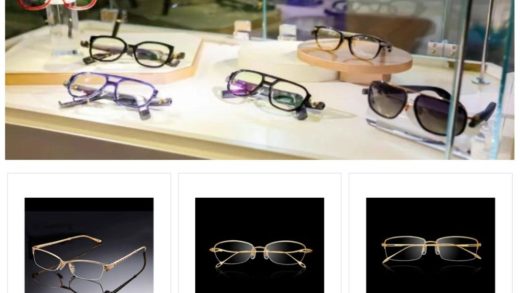I. Industry Risk Analysis
(1) Policy Risk
During the policy window period, the industry faces the risk of standard iteration. There is a gap between local government building energy – saving regulations and the central green building materials certification. The existing noise reduction standards are not yet mandatory for the new – type traffic noise control planning. The cost of technological upgrading is subject to the fluctuations of environmental protection production – restriction policies. The new regulations on sound insulation for prefabricated buildings piloted in first – tier cities may trigger the reconstruction of the supply chain. In cross – border trade, the upgrade of the EU CPR certification forces process reform, but the supporting subsidies are not clear.
(2) Economic Risk
Under the fluctuations of the economic cycle, the sound – insulating glass industry faces double squeezes from the demand side and the cost side: During the economic downturn, the real estate and decoration markets shrink, directly affecting the sound – insulation demand of new construction and renovation projects. The prices of upstream raw materials (such as glass substrates and sealants) fluctuate sharply with the economy, and coupled with the rising energy costs, the profit margin is continuously compressed. When credit is tightened, the financing costs of small and medium – sized enterprises surge, increasing the cash – flow pressure. While leading enterprises seize the existing market with their scale advantages, new entrants face the survival challenges of high fixed costs and low turnover rates.
(3) Social Risk
The sound – insulating glass industry faces the social risk of generational demand fragmentation: The home – purchasing ability of Generation Z is weakened, and they turn to the rental market, reducing their willingness to invest in long – term sound – insulation renovation. Although the middle – aged improvement – oriented group attaches great importance to the demand for silence, they prefer the overall solution of systematic doors and windows and are willing to pay a limited premium for single sound – insulating products. The demand for aging – friendly renovation in an aging society is often compressed in the basic decoration budget, resulting in the high – end sound – insulating products being in a dilemma of “good in name but poor in sales”. With the awakening of environmental awareness among the new generation of consumers, they are resistant to the high – energy – consumption nature of traditional glass production, forcing technological innovation but facing the pressure of rising costs, forming a generational game between green transformation and market acceptance.
(4) Legal Risk
Entrepreneurs in the sound – insulating glass industry face multiple legal risks: In terms of product quality compliance, if the sound – insulation performance fails to meet national/industry standards, it will trigger liability investigations and administrative penalties under the Product Quality Law. In the field of intellectual property, there is a risk of patent technology infringement. Using unauthorized technology is likely to trigger lawsuits. Against the background of stricter environmental protection regulations, excessive emissions of waste gas and wastewater in the production process may violate the Environmental Protection Law. Loopholes in contract management may lead to performance disputes with upstream and downstream enterprises, and legal disputes caused by unclear terms need to be prevented. In terms of labor employment, if social insurance payment, overtime work system, etc. do not comply with the Labor Contract Law, there will be a risk of labor arbitration.
II. Entrepreneurship Guide
(1) Suggestions on Entrepreneurial Opportunities
The acceleration of urbanization promotes the upgrading of traffic and building noise problems. The increase in policy subsidies for green buildings and energy – saving renovations has created a rigid demand for sound – insulating glass in the fields of home decoration, commercial decoration, and transportation facilities. Entrepreneurs can focus on niche scenarios (such as sound – insulating windows for old – house renovation and noise reduction solutions for low – floor residences) to develop cost – effective standardized products. Integrate online precise traffic for customer acquisition and offline community service provider channels. Strengthen consumers’ perception through short – video actual – measurement comparisons and third – party testing data. Simultaneously connect with B – end resources of urban renewal projects to access bulk orders, and achieve rapid replication in a light – asset model.
(2) Suggestions on Entrepreneurial Resources
Entrepreneurs in the sound – insulating glass industry should focus on the integration of supply chain, technology R & D, and channel resources: Prioritize connecting with tempered glass original sheet manufacturers and sealant strip suppliers, and establish long – term bargaining agreements to ensure the stable supply of core materials. Cooperate with building research institutes to obtain sound – insulation performance testing and certification, and collaborate with university material laboratories to develop composite sound – insulation interlayer technology to enhance product barriers. Integrate the channel resources of real estate developers and decoration companies, establish a sample case library for high – end residences, commercial office buildings, etc., and simultaneously layout the traffic entrance of building materials e – commerce platforms. Use the qualification of environmental protection and energy – saving policy subsidies to apply for green building product certification, and control the initial heavy – asset investment through equipment financial leasing.
(3) Suggestions on Entrepreneurial Teams
Entrepreneurs in the sound – insulating glass industry should give priority to recruiting technical experts with experience in acoustic material R & D and marketing talents familiar with the building industry channels. The founder needs to have the ability to integrate resources to coordinate technology transformation and supply chain management. The team structure is recommended to adopt a dual – core driving model of “technology + market” and allocate 1 – 2 members familiar with building industry standard certification. Establish a two – way verification mechanism of weekly technical feasibility tests and customer demand feedback. Strengthen cross – departmental collaboration in production, installation, and after – sales through project – based management. Reserve 15% – 20% of the team’s equity for technical shares to attract high – end talents, and allocate full – time risk – control personnel in view of the long payment cycle in the building field.
(4) Suggestions on Entrepreneurial Risks
In the sound – insulating glass industry, entrepreneurs need to focus on controlling product compliance (ensuring compliance with national building safety and noise control standards), supply chain stability (establishing a redundant supplier system to deal with the price fluctuations of glass substrates), accurate market positioning (diversifying customer source risks through dual – channel layout of engineering contractors and home – decoration channels), technological iteration reserve (investing in R & D of patented composite sound – insulation structures to avoid homogeneous competition), and environmental protection compliance management (configuring waste – gas treatment equipment to avoid environmental protection penalties). At the same time, reserve at least 6 months of cash flow to deal with the industry characteristics of long project cycles and slow payment collection. Regularly collect customers’ actual noise – reduction measurement data to optimize product performance, and establish a dynamic tracking mechanism for competitors to adjust pricing strategies in a timely manner.





